
You surely know that different types of fermentation are used to make great foods like beer and cheese, but did you know that it's also used to make soy sauce, pepperoni, sauerkraut, yogurt, bread, and even chocolate?
Food has been fermented by humans since the Neolithic era, long before anybody understood the science underlying fermentation.
We now understand why fermentation not only improves the flavor of foods like sourdough bread, cheese, and wine, but also serves to keep us alive, thanks to the scientific findings of French scientist Louis Pasteur, who demonstrated that living organisms begin fermentation.
So, what are the 3 types of fermentation?
Today we are bringing you some great information about the three types of fermentation and fermented foods, lactic acid fermentation, ethanal or alcohol fermentation and acetic acid fermentation. Learn a little about the science behind each ferment and how they lend themselves to some yummy fermented recipes!
What Is Fermentation?
To understand how fermentation works, it can be defined as the process by which bacteria, yeasts, or other microorganisms chemically break down a substance. This process often involves the release of gas (effervescence) and heat.
Fermentation is any metabolic process in which the action of microbes causes a desired change in food or drinks, whether it's to improve flavor, preserve goods, or provide health benefits.
Ferment is derived from the Latin verb "fervere," which means "to boil." Fermentation is, ironically, achievable without the use of heat.
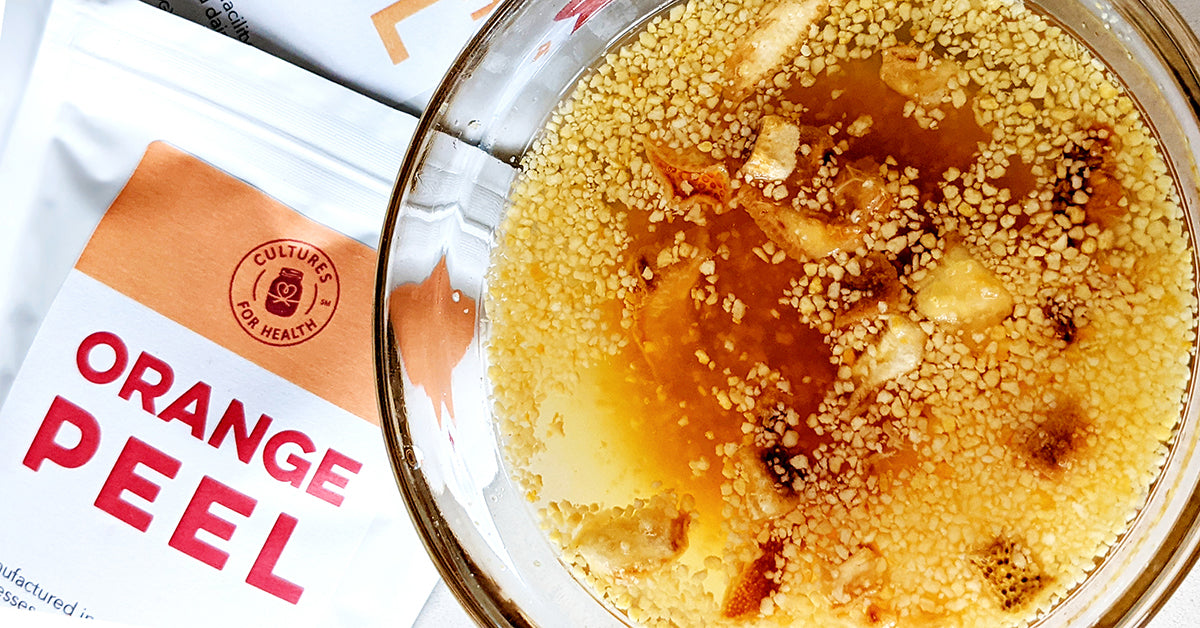
What Does Fermentation Do To Our Food?
Fermentation takes place in the absence of oxygen (anaerobic conditions) and in the presence of beneficial microorganisms that get their energy from fermentation (yeasts, molds, and bacteria).
Even when oxygen is plentiful, some yeast cells, such as Saccharomyces cerevisiae, prefer fermentation to aerobic respiration if there is enough sugar available.
These beneficial microorganisms break down sugars and starches into alcohols and acids during the fermentation process, making food more nutritious and preserving it so it may be stored for extended periods of time without rotting.
The enzymes required for digestion are found in fermentation products.
This is significant because individuals are born with a certain amount of enzymes, which decreases as they become older.
Fermented foods have the enzymes needed to digest them. Pre-digestion is also aided by fermentation.
Microbes feed on sugars and starches during the fermentation process, breaking down food before it is digested.
We love this TedED talk by Erez Garty. It really breaks down the process and gives some great insight into fermentation.ke a look at this video by TedED.
The 3 Types of Fermentation
1. Lactic Acid Fermentation (Or Lacto- Fermentation)
Lacto-Fermentation is arguably one of the most common types found in food. Lactic acid fermentation is responsible for the production of foods like yogurt, sauerkraut, and pickles.
Thanks to lactic acid bacteria, a sequence of chemical processes change your components into something quite different (and delicious).

No heat is required in the conversion of starches or sugars to lactic acid by yeast strains and bacteria.
Pyruvic acid employs nicotinamide adenine dinucleotide + hydrogen (NADH) to create lactic acid and NAD+ in these anaerobic chemical processes. (Fun Fact: Lactic acid fermentation takes place in human muscle cells as well.)
Many of the tasty ferments that you may already be acquainted with may be made using this approach. Lactic acid bacteria aid in the preservation of foods.
Look at it this way: yogurt and sour cream are both preserved forms of milk, while sauerkraut is a preserved cabbage.
They also induce desirable changes in flavor and texture in addition to preservation! Want to read more about lacto-fermentation? We go into detail in another blog post: What is Laco-Fermentation?
2. Ethanol Fermentation And Alcohol Fermentation
Brewing beer and manufacturing wine have become hugely profitable agricultural enterprises.
These industries sprang from ancient and empirical knowledge gathered from a variety of cultures throughout the world.
This historical expertise has now been coupled with fundamental scientific understanding and applied to current manufacturing techniques.

These businesses are the product of hundreds of scientists who were intrigued about how things worked putting in long hours.
Yeasts convert pyruvate molecules in starches or sugars to alcohol and carbon dioxide molecules, which is the result of the glycolysis (C6H12O6) metabolism.
Alcohol fermentation involves the conversion of pyruvate into ethanol and carbon dioxide. It is a two-step process;
- In the first step, glucose is converted to pyruvate by glycolysis
- In the second step, pyruvate is converted to ethanol and carbon dioxide by using a molecule of NADH
This type of ferment is generally high in prebiotics and provides a variety of health advantages. Gut bacteria digest ammonia, which protects the body from its damaging effects.
3. Acetic Acid Fermentation
Grain and fruit starches, and sugars ferment to produce sour vinegar and sauces. Apple cider vinegar, wine vinegar, and kombucha are examples of products that utilise this form of
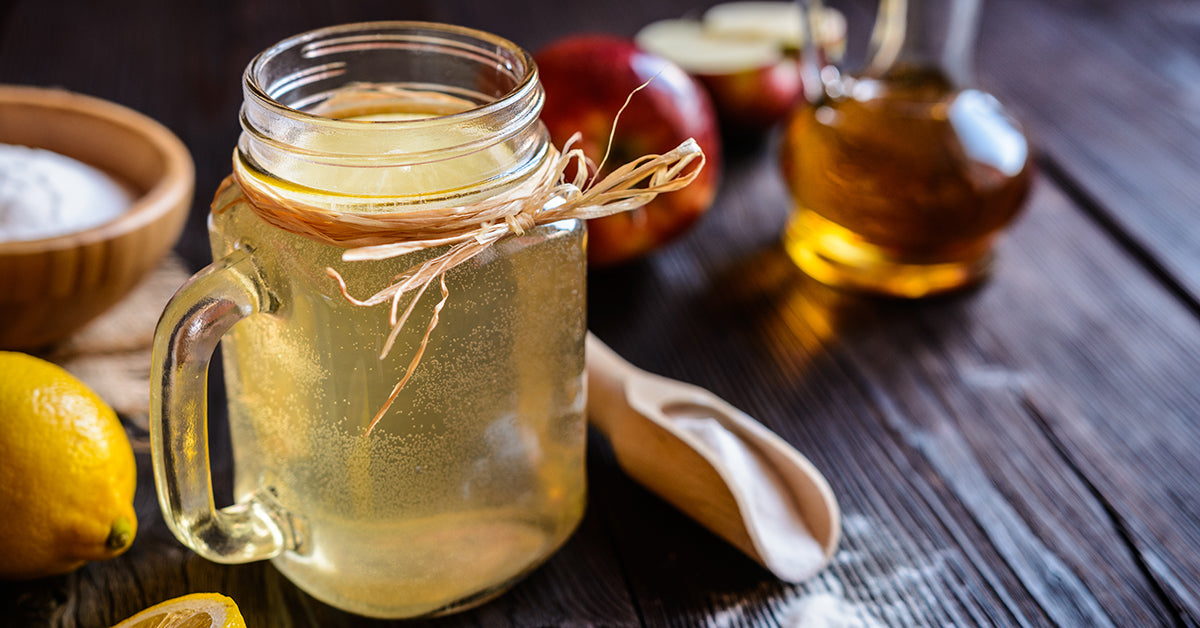
Vinegar is produced when acetic acid bacteria act on alcoholic beverages such as wine. They are used to perform specific oxidation reactions through processes called “oxidative fermentations”, which creates vinegar as a byproduct.
Check out our recipes for fermented bbq sauce.
Types Of Fermented Foods
1. Kefir
Kefir is a consumable yogurt-like fermented milk product prepared from cow, goat, or sheep's milk. Vitamin B12, calcium, magnesium, vitamin K2, biotin, folate, enzymes, and probiotics are all found in significant amounts in kefir.
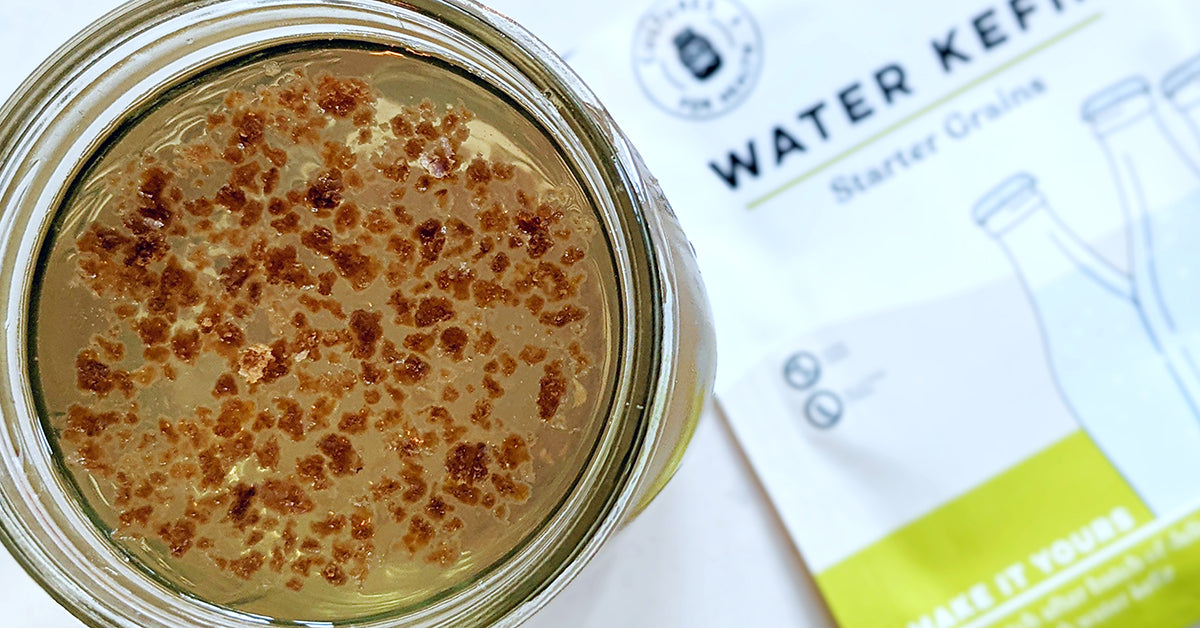 Kefir has been ingested in some form or another for over 3,000 years. The name "kefir" was coined in Russia and Turkey to describe a drink that makes you feel wonderful.
Kefir has been ingested in some form or another for over 3,000 years. The name "kefir" was coined in Russia and Turkey to describe a drink that makes you feel wonderful.
Best of all, Cultures For Health has starter grains that make it easy to get started at home!
2. Kombucha
Kombucha is a black tea and sugar fermented beverage (from various sources like cane sugar, fruit or honey). When coupled with sugar, it includes a colony of bacteria and yeast that kicks off the fermentation process.
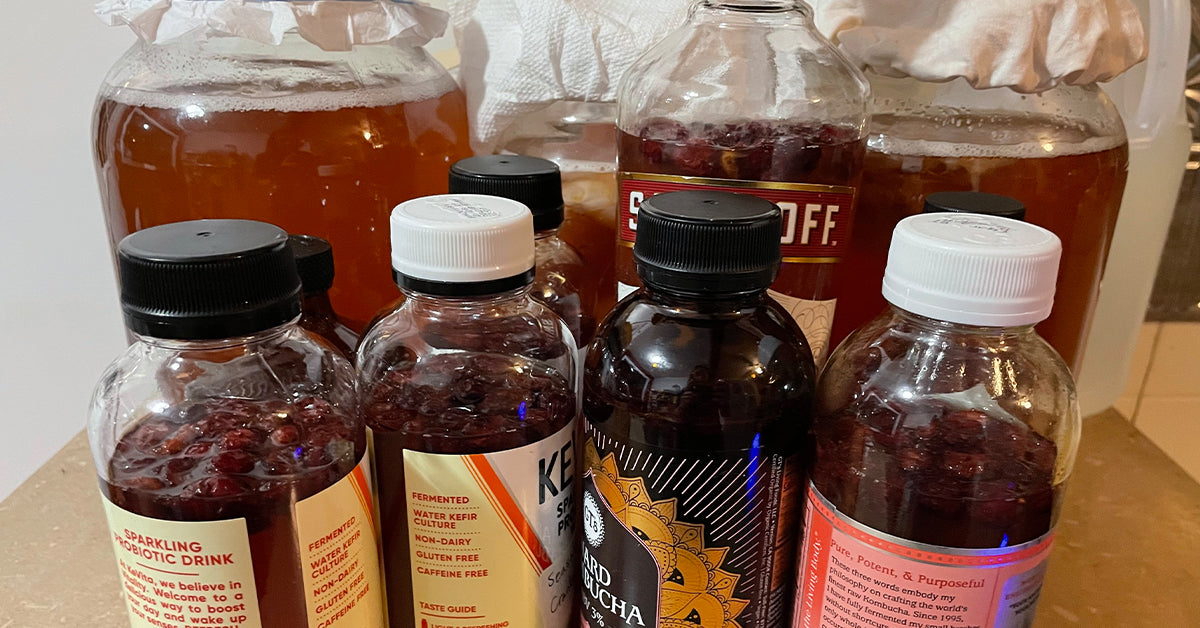
Is alcohol present in fermented foods like kombucha? Kombucha contains tiny levels of alcohol, but not enough to be intoxicating or even perceptible.
Kombucha is super easy to brew at home and can save you a lot of money when you compare it to the prices you find in the grocery store. You can start with a live SCOBY or a dehydrated SCOBY.
There are varieties with black and green tea so the opportunities for flavor are endless!
3. Sauerkraut
Sauerkraut is one of the oldest traditional meals, with 2,000-year-old or more origins in German, Russian, and Chinese cuisine.
Although the Germans were not the first to manufacture sauerkraut, the word sauerkraut literally means "sour cabbage."
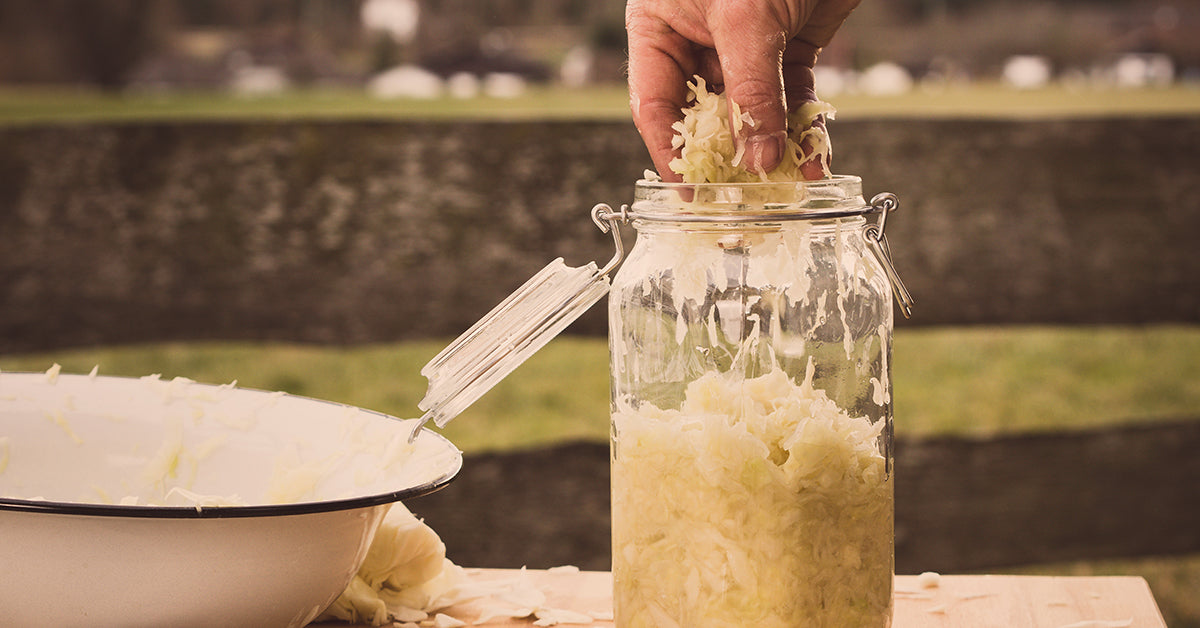
Sauerkraut is high in fiber, vitamin A, vitamin C, vitamin K, and B vitamins, and is made from fermented green or red cabbage. Iron, copper, calcium, sodium, manganese, and magnesium are all abundant in sauerkraut as well.
Is sauerkraut from the supermarket fermented? Not always, especially when it comes to canned or processed foods.
Real, traditional, fermented sauerkraut must be kept chilled, is commonly preserved in glass jars, and the package/label must state that it is fermented.
The best sauerkraut, of course, is the stuff you make at home! Sauerkraut is one of the easiest DIY ferments and has many nutritional benefits for your gut health.
This DIY Sauerkraut Kit is super simple and allows you to customize your own kraut at home.
4. Pickles
Didn't realize pickles had probiotics? Fermented pickles are high in vitamins and minerals, as well as antioxidants and probiotic bacteria that are good for your gut. Is it true that store-bought pickles are fermented?
Normally, no. Most store-bought pickles are produced using vinegar and cucumbers, which, although giving them a sour taste, does not result in natural fermentation.
Cucumbers and brine (salt + water) should be used to make fermented pickles.
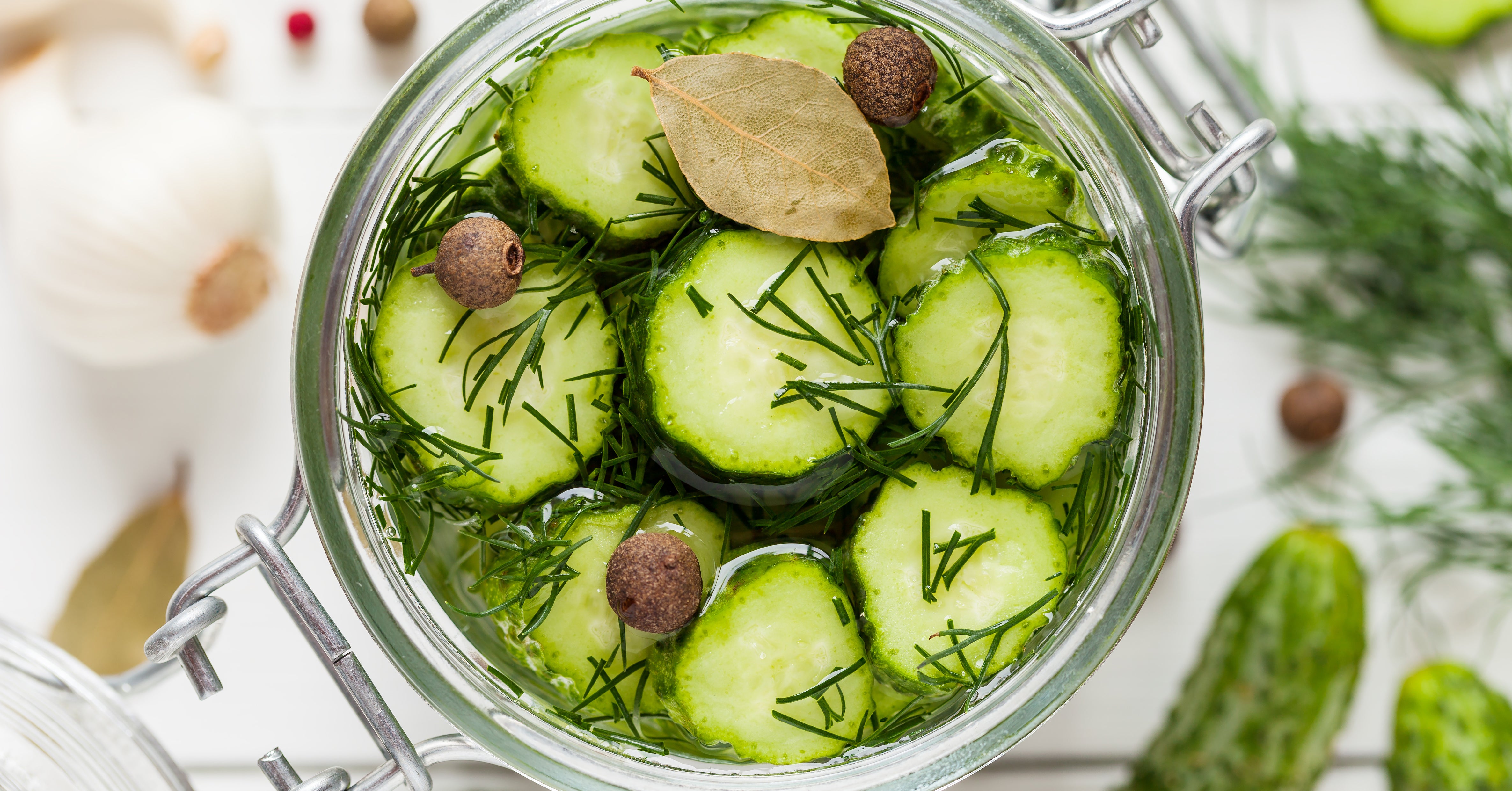
What brand of pickles should you buy if you want to get some probiotics? Look for "lactic acid fermented pickles'' prepared by a company who employs organic materials and brine, refrigerate the pickles, and specifies that the pickles have been fermented when purchasing a jar of pickles.
You'll receive some of the greatest probiotics for your gut if you can find a local producer, such as at a farmers market. Want to try making your own pickles at home? You can make crunchy, tasty pickles at home with our DIY Pickle Kit!
5. Tempeh
Tempeh, a foodstuff prepared by mixing soybeans with a tempeh starter, is another nutritious fermented food manufactured using soybeans (which is a mix of live mold).
After a day or two, it transforms into a solid, cake-like product that contains both probiotics and a substantial amount of protein. Tempeh resembles tofu from our tofu kit, but it is less spongy and more "grainy."
6. Kimchi
What is kimchi made of? This is a common question about this traditional Korean dish. Kimchi is a classic Korean fermented meal prepared with vegetables such as cabbage and spices such as ginger, garlic, pepper, and other seasonings.
It's frequently used in Korean dishes such as rice bowls, ramen, and bibimbap. It goes back to the seventh century and is considered a Korean delicacy.
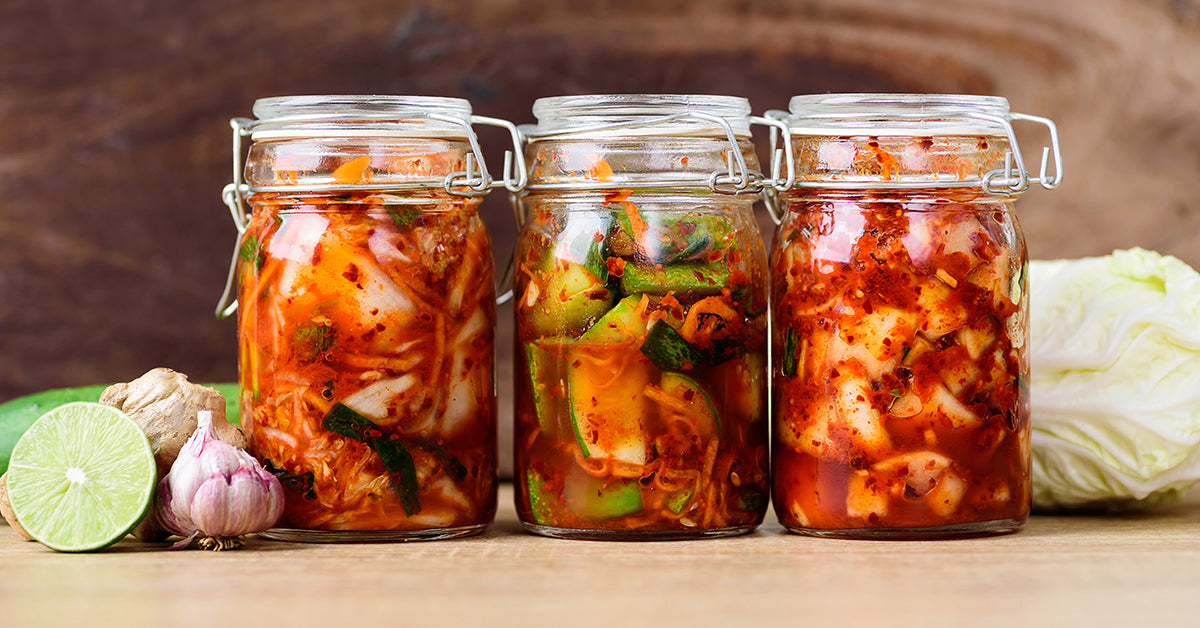
7. Apple Cider Vinegar
Raw apple cider vinegar with "the mother" has been fermented and includes some probiotics. It also contains specific acids, such as acetic acid, which help probiotics and prebiotics operate properly in your stomach.
Most store vinegars, on the other hand, are devoid of probiotics. Twice a day, add one tablespoon of apple cider vinegar to a drink.
To significantly raise probiotic levels, add one tablespoon of apple cider vinegar to your diet before breakfast, lunch, or dinner, and then start eating more fermented veggies like sauerkraut and kimchi or drinking kvass.
8. Sourdough Bread
Sourdough is a naturally leavened bread that rises without the aid of commercial yeast. Instead, it rises with the help of a sourdough starter culture, which is a fermented flour and water mixture containing wild yeast and beneficial bacteria.
This is also how sourdough gets its acidic flavor and slightly chewy texture. Wild yeast has a stronger flavor than commercial yeast and is all-natural, as it contains no additives.

9. Cottage Cheese
Food makers are beginning to make probiotic dairy products such as cottage cheese more widely available as more research confirms the benefits of probiotics.
Cottage cheese, like yogurt, may be fermented when bacteria aid in the breakdown of lactose (a form of sugar) in the dairy.
Look for cottage cheese that is low in sugar and has active cultures while shopping. Some varieties are also known as farmer's cheese or dry curd cottage cheese.
10. Coconut Kefir
Coconut kefir is a fantastic option for individuals who can't have dairy. This probiotic-rich drink is prepared with creamy coconut milk and kefir grains, but it's dairy-free and vegan-friendly, unlike conventional kefir or yogurt.
You may use it in smoothies, baked products, with fruit, on its own, and so on. Simply choose products that are low in sugar or unflavored, and flavor with stevia, fruit, or honey if desired.
What Are the Advantages of Fermentation?
If you don't have access to a refrigerator, how can you keep food from spoiling for long periods of time?
The solution is fermentation! Consider how much longer wine lasts than grapes, how much longer pepperoni lasts than fresh meat, and how much longer cheese lasts than milk.
Natural toxins in food are also removed, allowing us to eat it for longer periods of time.

Fermentation also results in carbonation, which is enjoyed in many different types of beverages.
Fermented foods are rich in probiotics, beneficial microorganisms that help maintain a healthy gut so it can extract nutrients from food. Fermentation can boost the amount of vitamins and minerals in food and make them more absorbable.
Fermentation boosts B and C vitamins while also improving folic acid, riboflavin, niacin, thiamin, and biotin levels. The probiotics, enzymes, and lactic acid in fermented foods facilitate the absorption of these vitamins and minerals into the body.
Another fun fact is that fermentation aids in the neutralization of anti-nutrients such as phytic acid, which may cause mineral shortages. Neutralizing phytates is particularly advantageous since they make carbs, proteins, and lipids less digestible.
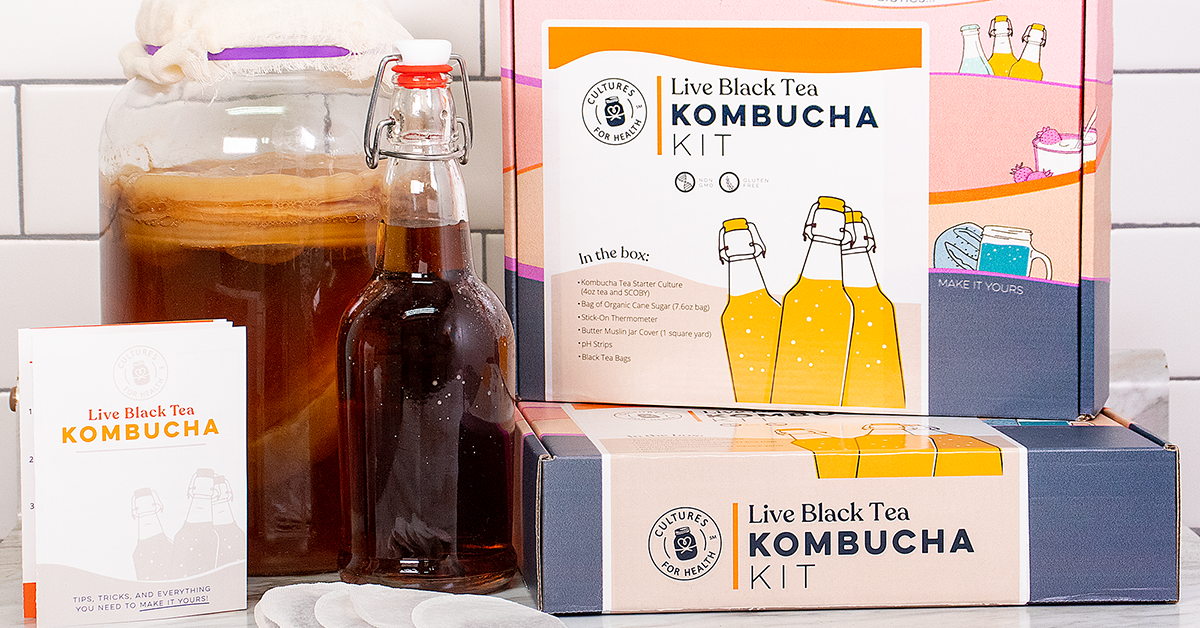
So what are you waiting for? Now that you know the types of fermentation, it’s time to get started!
Cultures For Health has tons of great DIY Fermentation Kits to help you begin your fermentation journey.













